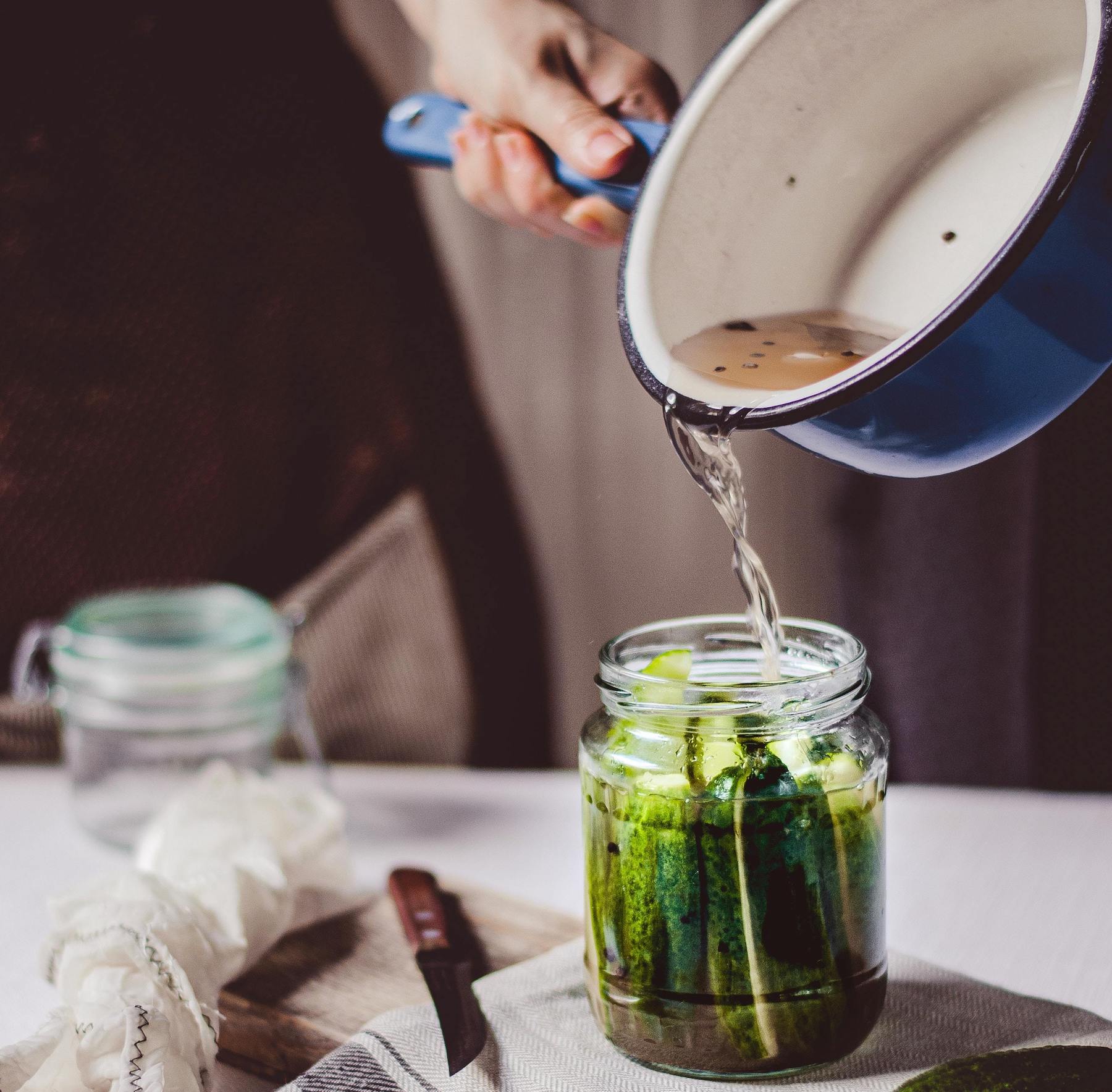Many enjoy the crunch and tang of a pickle alongside a classic American dish like a hamburger. But, did you know that a wide variety of vegetables can be pickled? Pickling may be one of the best ways to preserve produce that is going bad, reducing food waste and repurposing it to add a new layer of flavor to any cuisine.
Pickling is all about submerging vegetables in a simple brine of water, vinegar, salt, and oftentimes sugar, as well as other aromatics and spices on occasion. The vegetables soak up the brine over time, developing a deep flavor and crunch, and then can be enjoyed for up to five months in the fridge. Many pickle-connoisseurs choose to pickle anything and everything from cherry tomatoes to ginger, and even carrots!
The Quickest Way to Pickle
Wash and prep all of your fresh vegetables. Slice into cubes, spears, or leave whole. Note: the smaller a vegetable is cut, the quicker it will be able to absorb the brine.
Add veggies and any aromatics into clean mason jars, leaving enough space for the brine to completely submerge the veggies. Placing jalapenos or garlic among your veggies can help impart flavors as well!
If you’re looking to give your pickled veggies a bit more oomph, you can whip up a pickling spice to accompany your brine. Typical aromatics or spices can include black peppercorns, mustard seed, dill or dill seed, allspice berries, bay leaves or coriander seeds. Mix them together and sprinkle a few tablespoons in your jar to level-up the flavors.
As for your brine, combine equal parts of any basic vinegar (white is most popular) and water, salt, and sugar in a small pot on medium heat until the mixture is brought to a boil. Stir to ensure all of the salt and sugar is dissolved.
Take the pot off the stove once it has boiled, then cool for a couple of minutes before pouring over your vegetables in the jars. Leave half an inch to an inch at the top of the jar unfilled.

Seal the jars and allow it to cool to room temperature before retiring your pickled-to-be vegetables to the refrigerator. Enjoy after waiting 48 hours or more, ensuring the brine has penetrated the vegetables.
Feasting at Home has a great guide to pickling any vegetable, from creating the brine to layering different vegetables in the same jar. We also love the recipes from Taste of Home and The Spice House.
When greens appear limp or root veggies appear to be on their last leg, consider giving them a new life with pickling. Fresh herbs, onions, garlic, beets, green beans, and even cabbage have broken out as deliciously pickled vegetables that make valuable additions to any sandwich, salad, or bowl. Your gut will thank you for the healthy bacteria supplied by this fermented goodness!
